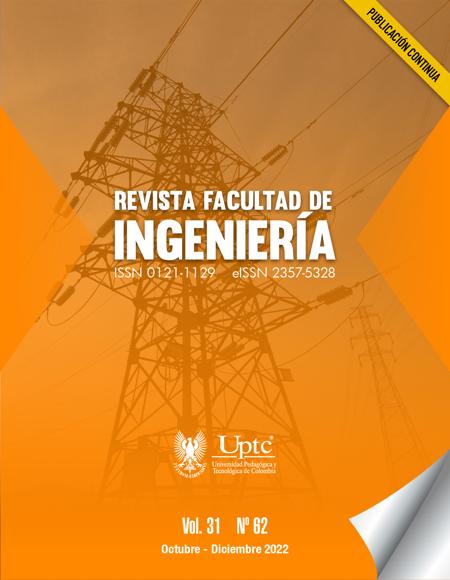Applying Predictive Data Mining to Discover Factors Associated to the Language Skill Performance from Elementary School Students

Abstract
In this paper, predictive data mining techniques are applied to determine the academic performance from fifth grade students in the Saber 5° tests Language skill at Colombian elementary schools in 2017. We employed the CRISP-DM methodology. Socioeconomic, academic, and institutional information was available at the ICFES databases. A minable dataset was obtained using data cleaning and transformation techniques. A decision tree was built with the Weka tool J48 algorithm. Some of the predictors of the discovered patterns are the nature and location of the school, whether or not students failed a school year, the age group, the mother's educational attainment, and the rates of ICTs and household appliances. The findings of this research serve as quality information for the decision-making at the Ministry of National Education (MEN) and the secretaries of education, and for the directors of elementary educational institutions to define improvement plans that result in the quality of elementary school education in Colombia.
Keywords
Data Mining, Classification, Decision Trees, Predictive Model, Performance Patterns, Saber 5 Tests
References
- Icfes, Saber 5°: Guía de orientación. Instituto Colombiano para la Evaluación de la Educación (ICFES), Colombia, Mineducación, 2017.
- Icfes, Pruebas Saber 3°, 5° y 9°: Lineamientos para las aplicaciones muestral y censal (ICFES), Colombia, Mineducación, 2014.
- J. Torres, L. Pachajoa, R. Pantoja, “Resultados de las Pruebas Saber en el grado quinto del área de las ciencias naturales en tres instituciones educativas oficiales del municipio de Pasto,” Revista Fedumar Pedagogía y Educación, vol. 1, no. 1, pp. 55-69, 2014.
- S. Martín, Pruebas Saber de lenguaje 3° y 5°: Posibilidades y retos desde la perspectiva de la evaluación formativa, Colombia, Universidad Pedagógica Nacional, 2015.
- Y. Gutiérrez, Relación entre la estructura familiar y el rendimiento académico en el área de matemáticas, Colombia, Editorial Milla, 2015.
- Icfes, Lineamientos generales Saber 5° y 9°, Colombia, Instituto Colombiano para la Evaluación de la Educación (ICFES), 2009.
- Icfes, Informe técnico Saber 5° y 9, Colombia, Instituto Colombiano para la Evaluación de la Educación (ICFES), 2011.
- R. Timarán, J. Caicedo, A. Hidalgo, Aplicación de la Minería de datos en la Detección de Patrones de Desempeño Académico e las Pruebas Saber Pro, Colombia, Editorial Universidad de Nariño, 2021.
- R. Timarán, J. Caicedo, A. Hidalgo, Minería de datos educativa para el descubrimiento de factores asociados al desempeño académico en las Pruebas Saber 11o. Colombia, Editorial Universidad de Nariño, 2021.
- S. Valero, A. S. Vargas, M. García, “Minería de datos: Predicción de la deserción escolar mediante el algoritmo de árboles de decisión y el algoritmo de los k vecinos más cercanos,” En Línea, vol. 779, no. 73, pp. 33-38, 2005.
- H. Escobar, M. Alcívar, C. Márquez, C. Escobar, “Implementación de Minería de Datos en la Gestión Académica de las Instituciones de Educación Superior,” Didasc@lia: Didáctica y educación, vol. 8, no. 3, pp. 203-212, 2017.
- R. Timarán, A. Calderón, J. Jiménez, “Aplicación de la minería de datos en la extracción de perfiles de deserción estudiantil,” Ventana Informática, vol. 28, pp. 31-47, 2013. https://doi.org/10.30554/ventanainform.28.181.2013 DOI: https://doi.org/10.30554/ventanainform.28.181.2013
- S.R. Timarán, J. Jiménez, A. Calderón, Detección de patrones de deserción estudiantil con minería de datos, Colombia, Editorial Universidad de Nariño, 2017.
- A. Azevedo, M. Santos, “KDD, SEMMA and CRISP-DM: a parallel overview,” in Proceedings of IADIS European Conference on Data Mining, Netherlands, 2008, pp. 182-185.
- J. Hernández, M. Ramírez, C. Ferri, Introducción a la Minería de Datos. Spain, Editorial Pearson Prentice Hall, 2005.
- J. Villena, CRISP-DM: La metodología para poner orden en los proyectos de Data Science, 2016, https://data.sngular.team/es/art/25/crisp-dm-la-metodologia-para-poner-orden-en-los-proyectos-de-data-science.
- J. Han, M. Kamber, J. Pei, Data Mining: Concepts and Techniques, Third Edition (3 edition.). Burlington, MA: Morgan Kaufmann, 2011.
- K. Sattler, O. Dunemann, “SQL database primitives for decision tree classifiers,” in Proceedings of the tenth international conference on Information and knowledge management, USA, 2001, pp. 379–386. DOI: https://doi.org/10.1145/502585.502650
- R. Timarán, M. Millán, “New algebraic operators and SQL primitives for mining classification rules,” in Computational Intelligence, USA, 2006, pp. 61–65.
- J. Hernández, M. Ramírez, M, C. Ferri, Introducción a la Minería de Datos, Spain, Editorial Pearson Prentice Hall, 2005.
- I. Witten, E. Frank, M, Hall, Data Mining: Practical Machine Learning Tools and Techniques, Third Edition, Morgan Kaufmann, 2011.
- M. Hall, E. Frank, I. Witten, Practical Data Mining: Tutorials, University of Waikato, 2011.
- J. Quinlan, Programs for machine learning, Morgan Kaufmann, 1993.
- M. García, A. Álvarez, Análisis de datos en WEKA–pruebas de selectividad, 2010. http://www.it.uc3m.es/~jvillena/irc/practicas/06-07/28.pdf